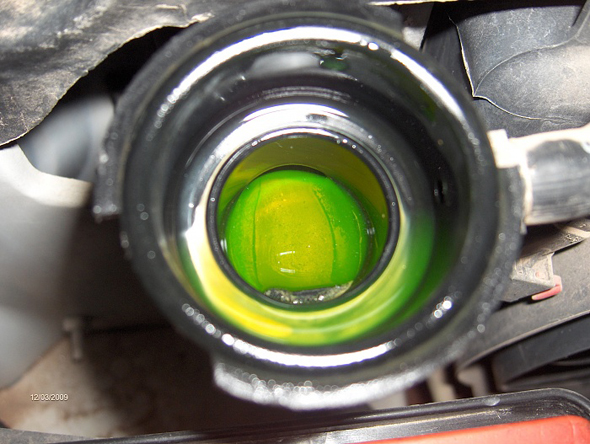How Often Does Coolant Need To Be Changed

We all love the roar of the engine, the precision handling, and that feeling of freedom behind the wheel. But beneath the surface of gleaming paint and performance upgrades lies a crucial system often overlooked: the cooling system. And at the heart of that system lies the humble coolant. So, how often should you really be changing it? The answer, as with most things in the automotive world, is: it depends. Let's dive deep.
The General Rule... With Caveats
The "general rule" you'll often hear is to change your coolant every 30,000 to 60,000 miles, or every 3 to 5 years. However, this is a very broad guideline, and factors like your vehicle's make, model, engine type, and driving habits can significantly impact this interval. Here's why:
- Coolant Type: Different coolants have different lifespans. Older green coolants typically require more frequent changes than newer OAT (Organic Acid Technology) or HOAT (Hybrid Organic Acid Technology) coolants.
- Engine Type: High-performance engines, or those that consistently operate under heavy loads, tend to put more stress on the cooling system, potentially requiring more frequent coolant changes.
- Driving Conditions: Stop-and-go traffic, extreme temperatures, and towing all contribute to increased engine heat and stress on the coolant, shortening its lifespan.
- Vehicle Age: Older vehicles may have compromised cooling system components (radiator, hoses, etc.) that can contaminate the coolant faster.
Coolant Types: A Quick Rundown
Knowing your coolant type is crucial. Mixing incompatible coolants can lead to corrosion and system damage. Here's a simplified overview:
| Coolant Type | Color | Typical Change Interval | Notes |
|---|---|---|---|
| Green (Inorganic Additive Technology - IAT) | Green | 2 years / 30,000 miles | Older technology, not recommended for most newer vehicles. |
| Orange (Organic Acid Technology - OAT) | Orange, Red, Pink, Purple | 5 years / 150,000 miles | Longer lifespan, commonly used in GM and other vehicles. |
| Yellow (Hybrid Organic Acid Technology - HOAT) | Yellow | 5 years / 150,000 miles | Combines benefits of IAT and OAT, often used in Chrysler, Ford, and some European vehicles. |
| Asian Blue/Green (Phosphate Organic Acid Technology - POAT) | Blue, Green | 5 years / 100,000 miles (first change), then 3 years / 50,000 miles | Formulated for Asian vehicles, often requires distilled water for mixing. |
Important Note: Always consult your owner's manual to determine the correct coolant type for your specific vehicle.
Model-Specific Considerations
Let's look at some examples based on different models and engine types:
- BMW 3 Series (E46): These older BMWs often require coolant changes every 2-3 years, especially if using the older blue coolant. The cooling system is known to be sensitive, and neglected coolant can lead to overheating issues.
- Honda Civic (Modern): With their newer engines and long-life coolant, many owners can go 75,000+ miles before needing a change. However, vigilant monitoring is still essential.
- Ford F-150 (Ecoboost): Towing heavy loads with an Ecoboost engine puts significant strain on the cooling system. Consider shortening the change interval if you frequently tow.
- Toyota Prius (Hybrid): The Prius has a dedicated cooling system for the hybrid components, which often has its own specific maintenance schedule. Consult your owner's manual for details.
Real-World Driving Impressions and Coolant Health Checks
Beyond mileage and time, the best way to determine if your coolant needs changing is to visually inspect it. Discoloration, sediment, or a rusty appearance are all signs of degradation. You can also use coolant test strips or a refractometer to measure the coolant's freeze point and pH level. A weak freeze point indicates a lack of protection against freezing temperatures, while an imbalanced pH level suggests the coolant is becoming acidic and corrosive.
Pros of Regular Coolant Changes:
- Prevents corrosion and scale buildup.
- Maintains optimal engine temperature.
- Extends the life of cooling system components.
- Ensures proper freeze protection.
Cons of Neglecting Coolant Changes:
- Overheating, which can lead to serious engine damage.
- Corrosion of radiator, water pump, and other components.
- Reduced cooling efficiency.
- Costly repairs.
Beyond the Basics: Flushing vs. Draining
When changing your coolant, you have two main options: draining and refilling, or performing a full system flush. Draining and refilling is simpler and involves removing the old coolant and adding new coolant. A flush, on the other hand, involves using a flushing machine or chemical cleaner to remove debris and contaminants from the entire cooling system. A flush is recommended if the system is heavily contaminated or if you're switching to a different type of coolant.
Driving Impression Note: A few years ago, my buddy Mark, a die-hard Mustang enthusiast, ignored his coolant changes for way too long. His system got so clogged that his 'Stang started overheating at the track. He ended up needing a new radiator and water pump, a costly lesson learned the hard way! Don't be like Mark.
In the end, proactive maintenance is key to keeping your engine running smoothly and avoiding costly repairs. So, check your coolant regularly, follow your manufacturer's recommendations, and don't hesitate to consult a qualified mechanic if you have any concerns.
Now, here's the fun part: What's the longest you've ever gone without changing your coolant (without any repercussions!)? Let the debate begin!
